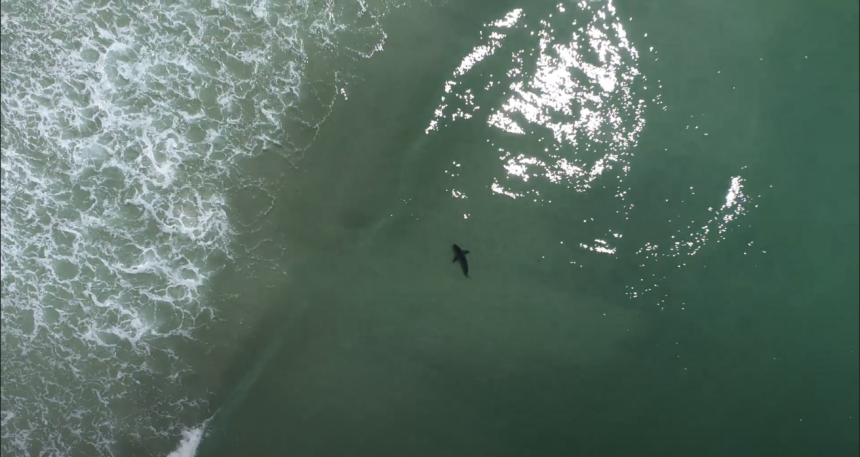Cal Poly students use artificial intelligence, drones to ‘forecast’ shark encounters

SAN LUIS OBISPO, Calif. - A team of students at Cal Poly is hoping a mix of drones and artificial intelligence will make beachgoers want to get back in the water.
They've teamed up with Cal State Long Beach's Shark Lab to train computers to recognize sharks in real-time. They are also working on a way to forecast shark encounters for surfers and swimmers.
Cal Poly's research project aims to alert lifeguards and protect sharks by enhancing AI methods to identify sharks and other objects from aerial video.
Cal State Long Beach's Shark Lab is known for developing innovative technology, including drones and underwater cameras, to learn about sharks in their natural habitat.
Shark Lab Director Chris Lowe says that white shark populations are increasing along central and southern California beaches, making people hesitant to get in the ocean.
“The goal is to automate ingestion of drone video data and flight metadata to generate spatially explicit information on water recreational activities — when, where and who is interacting with sharks along the coast,” said Lowe.
This effort is among this year’s Summer Undergraduate Research Program projects. The SURP program, in Cal Poly’s College of Engineering, pairs undergraduate students with faculty mentors and industry to conduct meaningful, real-world research.
For this project, Cal Poly students helped the Shark Lab develop machine learning algorithms, called neural networks, to identify water users — such as surfers, swimmers and bodyboarders — from drone footage.
“This is no easy task because light, sea conditions, and even the position of the water user on a board will matter,” Lowe said.
Cal Poly’s interdisciplinary team of students has backgrounds in computer science and related fields, and an interest or background in marine biology.
The work included creating an improved machine learning model with more than 1,300 images of sharks, seals, boats, surfers and swimmers.
